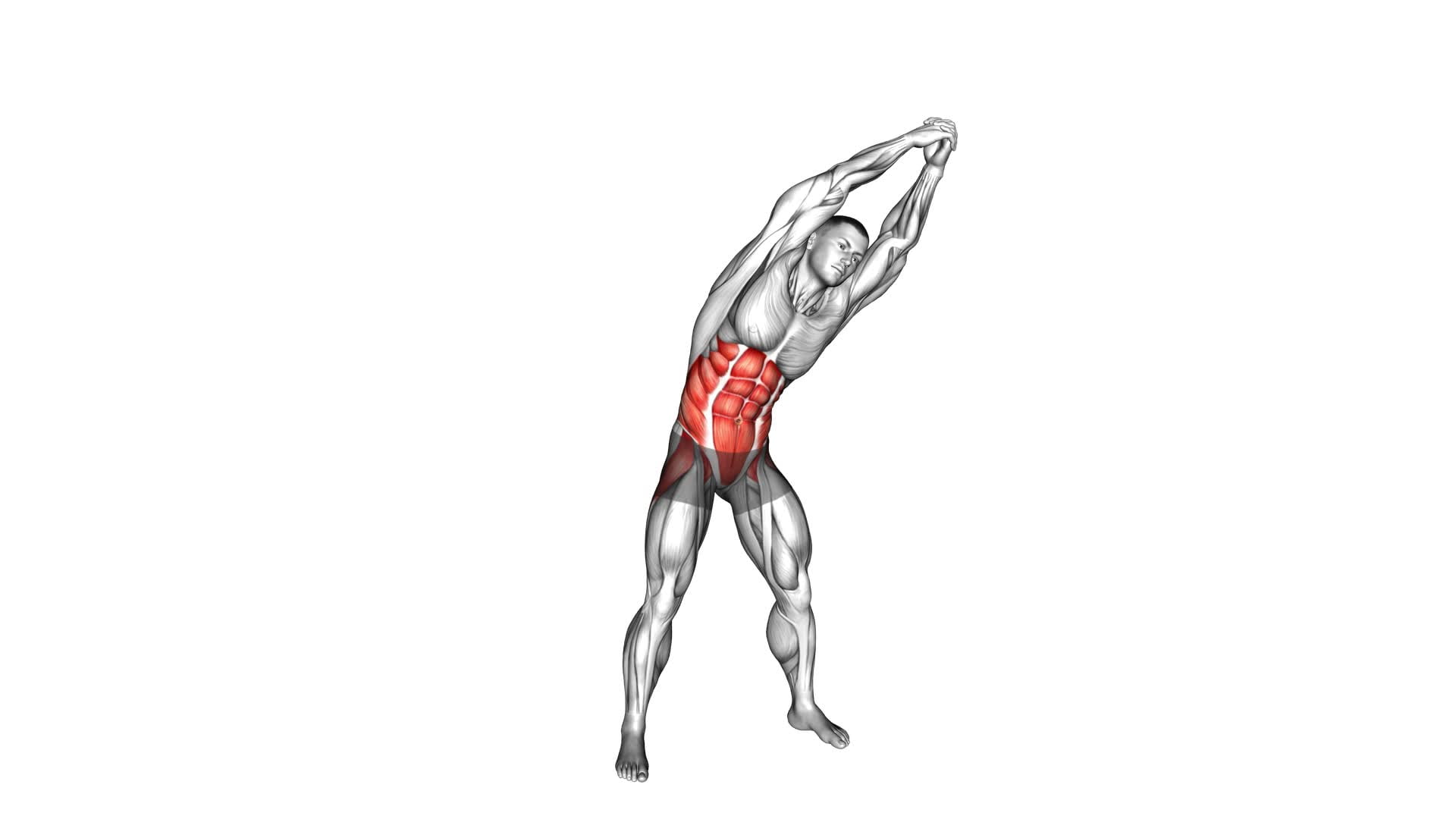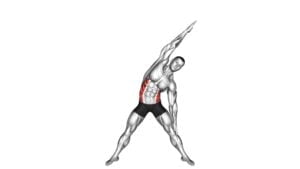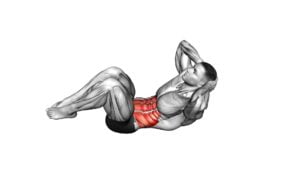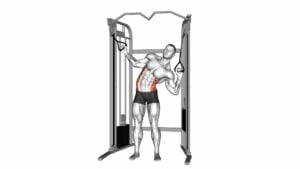Standing Obliques Rotation (male) – Video Exercise Guide & Tips

Looking to strengthen your obliques? Check out this video exercise guide for Standing Obliques Rotation!
Watch This Exercise Video
In just a few minutes, you'll learn proper form, technique, and variations to get the most out of this exercise.
Say goodbye to common mistakes and hello to a stronger core.
Grab the equipment you need and get ready to feel the burn!
Key Takeaways
- Standing Obliques Rotation improves core strength and rotational stability.
- It targets and strengthens the oblique muscles, toning the waistline.
- Proper form and technique include maintaining correct posture, engaging core muscles, and avoiding jerky movements.
- Modifications and listening to your body are important to prevent strain or injury and to adjust the intensity according to your fitness level.
Benefits of Standing Obliques Rotation
You will experience improved core strength and increased rotational stability through standing obliques rotation. Incorporating standing obliques rotation into your full body workout has numerous benefits. This exercise specifically targets the oblique muscles, which are located along the sides of your abdomen. By engaging these muscles, you can strengthen and tone your waistline, resulting in a more defined and sculpted midsection.
In addition to aesthetic benefits, standing obliques rotation also enhances your overall core strength. The rotational movement engages not only the obliques but also the transverse abdominis, rectus abdominis, and lower back muscles. By strengthening these muscles, you can improve your posture, stability, and balance.
Furthermore, incorporating standing obliques rotation into your full body workout helps to increase rotational stability. This is particularly beneficial for athletes and individuals involved in sports that require twisting movements, such as golf, tennis, or baseball. By improving your rotational stability, you can enhance your performance and reduce the risk of injuries related to rotational movements.
To incorporate standing obliques rotation into your full body workout, start by standing with your feet hip-width apart and holding a medicine ball or a dumbbell at chest level. Engage your core and rotate your torso to one side, keeping your hips stable. Return to the starting position and repeat on the other side. Aim for 10-12 repetitions on each side, gradually increasing the weight and intensity as you progress.
Proper Form and Technique for Standing Obliques Rotation
To perform the standing obliques rotation exercise with proper form and technique, it's important to maintain a stable core and engage the oblique muscles throughout the movement. Here are some tips to help you execute this exercise effectively:
- Stand with your feet shoulder-width apart and knees slightly bent.
- Hold a dumbbell or medicine ball with both hands, positioning it at chest level.
- Keep your back straight and your shoulders relaxed.
Begin the movement by rotating your torso to the right, while keeping your hips facing forward.
- Exhale as you rotate, squeezing your oblique muscles on the right side.
- Pause briefly at the end of the rotation and then slowly return to the starting position.
- Repeat the movement on the left side.
- Aim for controlled and smooth rotations, avoiding any jerky or sudden movements.
- Remember to breathe throughout the exercise, inhaling as you prepare for the rotation and exhaling as you rotate.
- Start with a light weight and gradually increase as you become more comfortable with the exercise.
Equipment Needed for Standing Obliques Rotation
To perform the standing obliques rotation exercise, you'll need a dumbbell or medicine ball. These pieces of equipment will add resistance and intensity to your workout, helping to strengthen and tone your oblique muscles. The weight of the dumbbell or medicine ball will depend on your fitness level and personal preference. It's recommended to start with a lighter weight and gradually increase as you become more comfortable with the exercise.
When selecting a dumbbell or medicine ball, choose one that's appropriate for your strength and ability. The weight should be challenging but still allow you to maintain proper form throughout the exercise. It's important to choose equipment that you can comfortably hold and control without straining or compromising your posture.
If you don't have access to a dumbbell or medicine ball, there are modifications you can make to perform the standing obliques rotation exercise without equipment. You can use a water bottle, a filled backpack, or even just your body weight to provide resistance. By engaging your core and focusing on the rotational movement, you can still effectively work your oblique muscles without the need for additional equipment.
Remember to always listen to your body and modify the exercise as needed to ensure safety and prevent injury.
Variations and Progressions for Standing Obliques Rotation
To continue building strength and improving the effectiveness of your standing obliques rotation exercise, incorporate variations and progressions into your routine.
By adding these advanced obliques workouts, you can challenge your muscles in new ways and continue to make progress.
Here are two sub-lists of variations and progressions to consider:
- Standing Obliques Rotation Variations:
- Weighted Standing Obliques Rotation: Hold a dumbbell or kettlebell in your hands while performing the rotation to increase resistance and intensity.
- Standing Obliques Rotation with Resistance Band: Attach a resistance band to a stable anchor point and hold the other end in your hands. As you rotate, the resistance band adds extra tension, targeting your obliques even more.
- Standing Obliques Rotation Progressions:
- Single-Leg Standing Obliques Rotation: Lift one foot off the ground and balance on the other leg while performing the rotation. This challenges your core stability and increases the difficulty.
- Standing Obliques Rotation with Lateral Lunge: Incorporate a lateral lunge into the rotation exercise by stepping to the side as you rotate. This adds a dynamic movement and engages your leg muscles as well.
By incorporating these standing obliques exercises and advanced obliques workouts into your routine, you can continue to challenge your muscles and see progress in your strength and tone.
Now let's move on to the next section and discuss common mistakes to avoid during standing obliques rotation.
Common Mistakes to Avoid During Standing Obliques Rotation
Avoiding common mistakes is crucial for maximizing the effectiveness of your standing obliques rotation exercise. Proper breathing technique is essential during this exercise to ensure that you're engaging your core muscles correctly. Many people make the mistake of holding their breath or exhaling too forcefully, which can lead to unnecessary tension in the body and decrease the effectiveness of the exercise. Remember to inhale deeply through your nose before starting the rotation, and exhale slowly and steadily through your mouth as you rotate your torso.
Another common mistake to avoid is using excessive momentum to perform the rotation. This can happen when you swing your arms or twist your body too quickly. Instead, focus on controlling the movement and using your oblique muscles to initiate and guide the rotation. This will help to target the muscles more effectively and prevent strain or injury.
If you find the standing obliques rotation exercise too challenging, there are recommended modifications that you can try. One modification is to decrease the range of motion by rotating your torso only halfway or using a lighter weight. Another option is to perform the exercise in a seated position, which can provide additional stability and support. Remember to listen to your body and choose the modification that works best for you.
Frequently Asked Questions
How Many Calories Can Be Burned by Doing Standing Obliques Rotation?
Standing obliques rotation is an effective workout that can help increase your caloric expenditure. By engaging your oblique muscles and rotating your torso, you can burn calories and strengthen your core.
While the exact number of calories burned will vary depending on factors such as intensity and duration, incorporating standing obliques rotation into your fitness routine can contribute to overall calorie burn and help you reach your fitness goals.
How Often Should One Perform Standing Obliques Rotation to See Results?
To see results from standing obliques rotation, you need to perform it with the right frequency. The effectiveness of this exercise depends on how often you do it. Consistency is key.
Aim for at least 2-3 times a week to start seeing improvements in your oblique muscles. Make sure to give your body enough time to rest and recover between sessions.
Can Standing Obliques Rotation Help Reduce Love Handles?
Standing obliques rotation is a highly effective exercise for strengthening your core and can definitely help reduce love handles. Incorporating this exercise into your full body workout routine will target your oblique muscles and promote overall strength and stability.
Are There Any Modifications for People With Lower Back Pain While Doing Standing Obliques Rotation?
If you have lower back pain, there are modifications and exercise alternatives you can try while doing standing obliques rotation. It's important to listen to your body and avoid any movements that worsen your pain.
You can consider doing seated oblique exercises or using a stability ball for support. Remember to consult with a fitness professional or physical therapist for personalized guidance and to ensure you're performing the exercises correctly and safely.
Can Standing Obliques Rotation Improve Posture?
Standing obliques rotation is a great exercise to improve posture. By incorporating this movement into your routine, you can strengthen your core muscles and improve balance. This exercise targets the oblique muscles, which play a crucial role in maintaining proper posture.
Conclusion
In conclusion, the standing obliques rotation is a highly effective exercise for targeting and strengthening the oblique muscles.
By incorporating proper form and technique, as well as utilizing variations and progressions, individuals can maximize the benefits of this exercise.
It's important to avoid common mistakes in order to prevent injury and achieve optimal results.
With the right equipment and dedication, the standing obliques rotation can be a valuable addition to any workout routine.

Author
Years ago, the spark of my life’s passion ignited in my mind the moment I stepped into the local gym for the first time. The inaugural bead of perspiration, the initial endeavor, the very first surge of endorphins, and a sense of pride that washed over me post-workout marked the beginning of my deep-seated interest in strength sports, fitness, and sports nutrition. This very curiosity blossomed rapidly into a profound fascination, propelling me to earn a Master’s degree in Physical Education from the Academy of Physical Education in Krakow, followed by a Sports Manager diploma from the Jagiellonian University. My journey of growth led me to gain more specialized qualifications, such as being a certified personal trainer with a focus on sports dietetics, a lifeguard, and an instructor for wellness and corrective gymnastics. Theoretical knowledge paired seamlessly with practical experience, reinforcing my belief that the transformation of individuals under my guidance was also a reflection of my personal growth. This belief holds true even today. Each day, I strive to push the boundaries and explore new realms. These realms gently elevate me to greater heights. The unique combination of passion for my field and the continuous quest for growth fuels my drive to break new ground.







